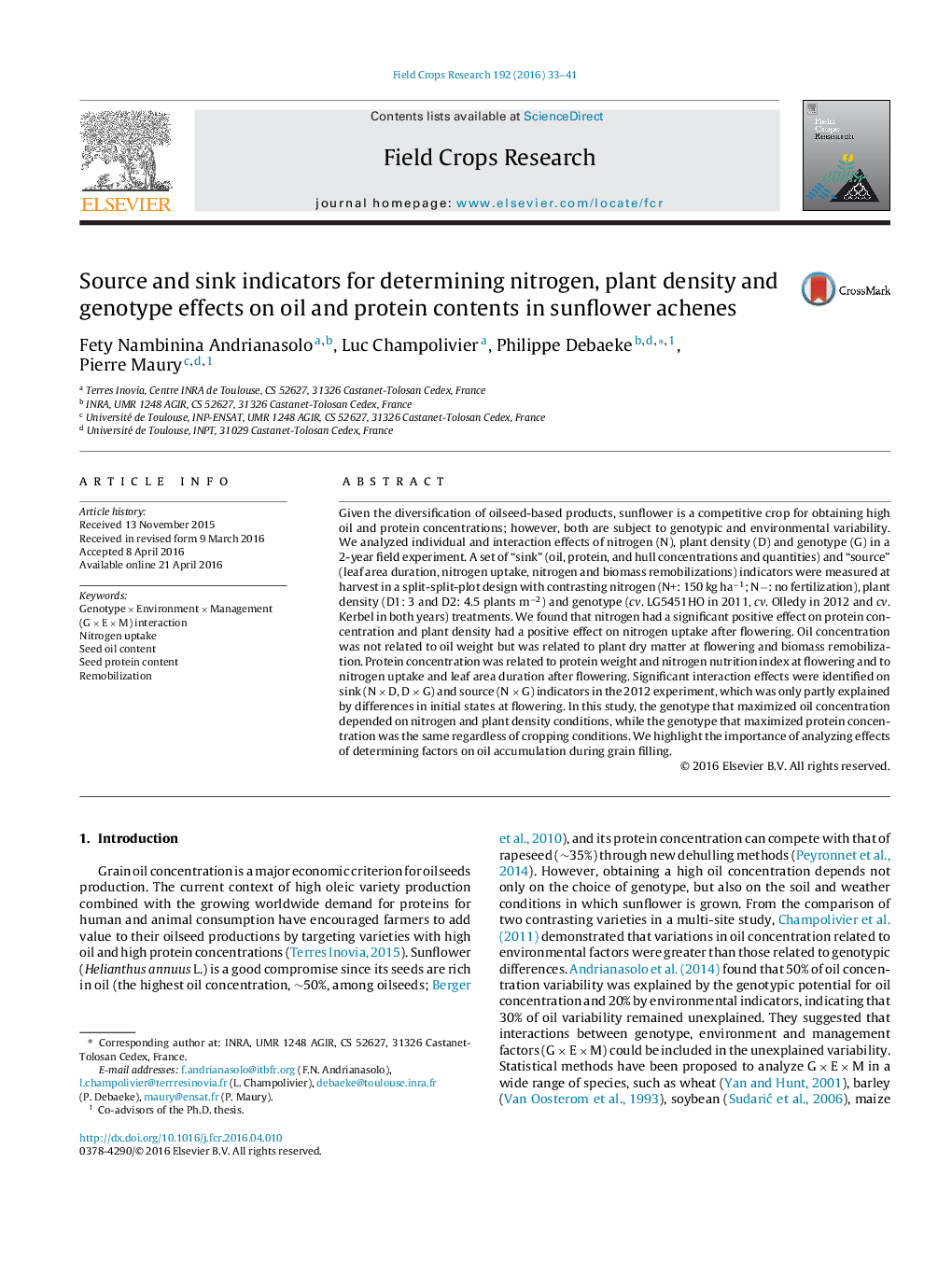| Article ID | Journal | Published Year | Pages | File Type |
|---|---|---|---|---|
| 6374480 | Field Crops Research | 2016 | 9 Pages |
Abstract
Given the diversification of oilseed-based products, sunflower is a competitive crop for obtaining high oil and protein concentrations; however, both are subject to genotypic and environmental variability. We analyzed individual and interaction effects of nitrogen (N), plant density (D) and genotype (G) in a 2-year field experiment. A set of “sink” (oil, protein, and hull concentrations and quantities) and “source” (leaf area duration, nitrogen uptake, nitrogen and biomass remobilizations) indicators were measured at harvest in a split-split-plot design with contrasting nitrogen (N+: 150 kg haâ1; Nâ: no fertilization), plant density (D1: 3 and D2: 4.5 plants mâ2) and genotype (cv. LG5451HO in 2011, cv. Olledy in 2012 and cv. Kerbel in both years) treatments. We found that nitrogen had a significant positive effect on protein concentration and plant density had a positive effect on nitrogen uptake after flowering. Oil concentration was not related to oil weight but was related to plant dry matter at flowering and biomass remobilization. Protein concentration was related to protein weight and nitrogen nutrition index at flowering and to nitrogen uptake and leaf area duration after flowering. Significant interaction effects were identified on sink (N Ã D, D Ã G) and source (N Ã G) indicators in the 2012 experiment, which was only partly explained by differences in initial states at flowering. In this study, the genotype that maximized oil concentration depended on nitrogen and plant density conditions, while the genotype that maximized protein concentration was the same regardless of cropping conditions. We highlight the importance of analyzing effects of determining factors on oil accumulation during grain filling.
Related Topics
Life Sciences
Agricultural and Biological Sciences
Agronomy and Crop Science
Authors
Fety Nambinina Andrianasolo, Luc Champolivier, Philippe Debaeke, Pierre Maury,
